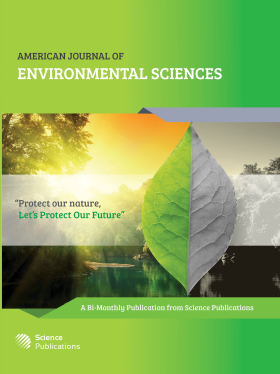Heavy Metal Mobility in Polluted Soils: Effect of Different Treatments
Abstract
The effects of biosolid compost and phytoremediation applied on the leaching of cadmium, copper, lead and zinc, through the different horizons of a superficially polluted soil were determined. The soil was from the Province of Buenos Aires, Argentina. It was contaminated with cadmium copper, lead and zinc. Leaching columns were used with three different horizons: A: 0.12 m A horizon, B: 0.12 m horizon A+0.15 Bt horizon and C: 0.12 m A horizon+0.15 m Bt horizon+0.13 m BC horizon. The treatments were (1). Witness (contaminated soil), (2). contaminated soil+plants (Plant), (3). contaminated soil+50 Mg has-1 biosolid compost (Compost) and (4). contaminated soil+50 Mg has-1 biosolid compost+plants (Compost-Plant). The leached ones were gathered after incorporating to the columns the following volumes of water A: 1000 mL, B: 1200 mL and C: 2000 mL. Leachates were obtained out after harvesting vegetal material. It was found that horizon Bt presents a barrier to metal leaching. Both concentration of clay and type of clay appears to immobilize heavy metals in those soils. The clay content over 40% and/or 53.4 g smectite g-1 soils reduce the heavy metal leaching. The application of organic amendment or occurrence of plant eventually used in remediation techniques did not influence on the leaching of metals.
DOI: https://doi.org/10.3844/ajessp.2008.620.624

- 5,717 Views
- 5,237 Downloads
- 22 Citations
Download
Keywords
- Biosolid compost
- fitoremediation
- leaching
- texture
